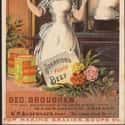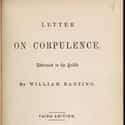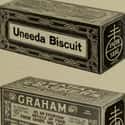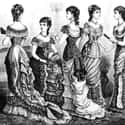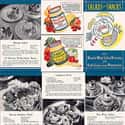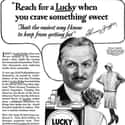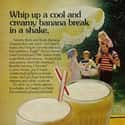-
(#1) Lord Byron's All Vinegar Diet That Nearly Killed A Generation Of Artists
Here's a shocker - Lord Byron was someone Carly Simon might call "vain." He had a big fear of gaining weight, and he went to great lengths to keep that from happening. At Cambridge, he limited himself to biscuits and soda water or simply potatoes soaked in vinegar. He kept up punishing and restrictive diets throughout his life and maintained a special taste for water with vinegar. To supplement this (lack of intake), he also wore lots of wooly layers to sweat off those extra pounds throughout the day. Not only were these aspects of his diet dangerous - to deal with the hunger pains - he also smoked cigars, a lose-lose for his health.
But it wasn't just him. Because Byron was so influential, others followed his vinegar-drenched ways, and there was widespread concern about the "impressionable Romantics were restricting themselves to vinegar and rice to get the fashionably thin and pale look."
-
(#2) The Eat-All-You-Want-With-A-Tiny-Touch-Of-Arsenic Diet
The idea of eating everything you want and still losing weight has always been a tempting proposition. Just like today, dealing in diet pills and tonics was a lucrative industry in the 19th century. But, back in the day, diet pills contained dangerous ingredients like arsenic and strychnine. These were promoted as "speeding up the metabolism, much like amphetamines do," according to Louise Foxcroft, a historian and author. Though the pills only contained small amounts, they were still dangerous - even more so considering that women would take more than the recommended dose in an attempt to slim down.
-
(#3) The Great Masticator's Diet That Nearly Destroyed Everyone's Jaws
How much do you chew your food? Well, Horace Fletcher, AKA the Great Masticator, started suggesting in 1895 that everyone should chew more. A lot more. His belief was that “the most important part of nutrition is the right preparation of food in the mouth for future digestion." This basically meant chewing food up to 100 times a minute, until it was a liquid so gross you no longer actually wanted to swallow it. The practice earned the moniker "Fletcherism," and under this diet regime you could eat anything you wanted as long as you chewed it until it turned fluid. Fletcherism became so popular, in fact, that people would time each other at dinner parties in order to make sure everyone at the gathering was getting enough chews in. Sounds like a lot of tired jaws.
-
(#4) The "I Am Banting" Diet That Was The Original Low-Carb Trend
An English carpenter named William Banting had trouble with his weight: a lot of trouble. After trying all sorts of exercise and regimes, he finally found a diet that worked for him. Limited to one ounce of toast, lots of protein, and being allowed "the fruit of any pudding" (but not the pastry), it was basically an early, low-carb diet. He published a booklet describing the diet and his success.
The weird part? It was so successful that his name became a verb synonymous with the diet, with people refusing carbohydrates by saying "No thanks, I'm banting." In fact, "bant" is still used to describe dieting in Sweden. Talk about making a name for yourself.
-
(#5) The Graham Cracker Diet That Helped People Get Rid Of Their (Sexual) Excess
The idea of diets promoting virtue isn't just a product of our Instagram obsessions; the link between food and morality has a really long history. In fact, in the 1830s, Evangelical minister Sylvester Graham - of Graham Cracker fame - was fed up with the sexual appetites of Americans and felt like their carnal urges were encouraged by a fatty diet. His solution? Create and consume food that was as bland as possible. In Graham's low-sex diet, grains, fruits, and vegetables were encouraged, but spices and meats were not. Thousands of people followed this diet, becoming known as "Grahamites." Graham even developed his own incredibly bland wheat germ loaf, the predecessor of the Graham cracker, which was sold commercially after Graham's death at the turn of the twentieth century. But, as you can imagine, those early crackers have nothing on the delicious, cinnamon, S'more-makers we know today.
-
(#6) The Sherry Diet That Kept Mrs Average Drunk
Nowadays, booze is purported to be a source of 'empty' calories, but it wasn't always considered a dieter's enemy. In fact, some diets actively recommended it. In a 1955 article in The Telegraph, a diet genius named Barbara Taylor wrote in that she was sure sure she had the perfect "diet for Mrs Average." How to stay slim? Drink a sherry at the end of every meal. Sweet or dry, that was Mrs Average's decision, just as long as she didn't forego her dribble of choice.
-
(#7) The Inuit Diet That Helped You Prevent Scurvy With All-You-Can-Eat Whale Blubber
Take all the misery of a low-carb diet and add a bunch of whale blubber, and you'll have the wonder that is the Inuit diet. The explorer Vilhjalmur Stefansson was impressed with the diets he saw on Arctic explorations between 1908 and 1918 and decided to adopt them himself. The diet consisted almost solely of fish and meat, sometimes with nothing else for months at a time. For example, "stinkfish," a particular Inuit favorite, is made of "fish buried in seal bags or cans in the tundra and left to ferment." Amazed at the Inuits' ability to avoid scurvy without eating fruits and vegetables, Stefansson brought the diet back to the United States and demonstrated an American-ized version that involved eating lots of meat, poultry, fish, and organs like brain. Astoundingly, considering how unappetizing it sounds, the diet still has an occasional resurgence in the US.
-
(#8) The 'Art of Living Long' Diet That Let You Have More Wine Than Food
One of the earliest dieting best-sellers - The Art of Living Long - dates all the way back to 1558. Luigi Cornaro began the diet by limiting his food intake to 400 grams a day. Later, he got even stricter, limiting himself to a single egg. There was a big plus to subscribing to Cornaro's regimen, however. He, rather dubiously, still allowed himself 500 grams of wine as part of the diet. But it may indeed help you live long, if Cornaro was anything to go by - he lived until the ripe age of 98.
-
(#9) The Lose-Weight-By-Doing-Literally-Nothing Sleeping Beauty Diet
A mid-twentieth-century diet that appears to have seemingly disappeared allowed you to lose weight with no effort at all. No effort, literally zero, as in not even the effort of being awake, is the key to weight loss according to The Sleeping Beauty Diet. The theory behind the diet is a beautifully simple one: if you're sleeping, then you can't eat. How can you achieve best results? By being sedated for multiple days at a time! Apparently Elvis was a big fan - but he was also a big fan of fried sandwiches, so his diet tips may not necessarily be the best ones to follow.
-
(#10) The "La Mar Reducing Soap" That Let You Wash The Fat Right Off
There's a long history of gimmicks that have promised to help you lose weight without changing your diet. Or doing any exercise. Or really doing anything at all. In the 1920s and '30s, women reached for "La Mar Reducing Soap" and other products that promised to wash the pounds away in the bath. The reality? It was basically just hand soap, and no amount of scrubbing would do the trick. It there did exist a product that had the ability to wash the fat right off of your body, it would probably be a little more well known.
-
(#11) Victorian Women Squeezed Into Their Corsets With The Tapeworm Diet
Tapeworms are one of the most dangerous - and gross - weight-loss fads, but they tend to pop up here and there throughout history. These flat, parasitic worms get their nutrients from their host, so the hope is that they'll slim you down by taking over the things that you consume. In the Victorian era, women were thought to take little pills containing tapeworms in order to grow one of their very own.
Consuming a pill might sound straightforward, but getting rid of a tapeworm is a much more difficult task, and in many cultures it's thought that you have to hold a bowl of liquid up to one of your, erm, orifices, to coax it out. In the Victorian era, there were also inventions thought to help lure them, like a little cylinder with food in it.
The good news? There's a chance that these were actually scams - and that most of the pills were placebos. But this doesn't change the (terrifying) fact that Victorians were ready to give tapeworms a try, as are some people today.
-
(#12) The Banana And Skim Milk Diet That Was Basically A Science-Backed Publicity Scam
The public loves it a good super food. But before chia, kale, and goji berries, the masses lauded a much more humble fruit. The banana was once considered the most super of foods, in part thanks to a Johns Hopkins study released by Dr. George Harrop in 1934. Harrop came to this conclusion after he tested a diet mostly of bananas and skim milk on diabetics who, unsurprisingly, still had diabetes but lost weight.
Enter the banana and skim milk diet, which took the country by storm. United Fruit pushed its popularity, and people gobbled it up. It's another (very weird) diet that manages to reemerge every now and then.
-
(#13) The Diet That Advised People To "Reach For A Lucky Instead Of A Sweet"
In terms of damaging dieting advice, this one may be at the top of the list. Although not necessarily a 'regime' that people followed, in the 1920s, Lucky Cigarettes advertised their cigarettes as a diet tool, building their ad campaign on the idea that if you "reach for a Lucky when you crave something sweet," the cigarettes would keep you trim. Granted, it's something that people still use to curb hunger cravings, but that certainly doesn't make it a good or healthy thing.
-
(#14) The "Prolinn Diet" That Was Full Of Animal Hooves And Heart Attacks
So many diet trends haven't been very healthy, but this one has the added benefit of being actively dangerous and disgusting. In the 1970s, a doctor called Roger Linn started marketing a supplement called Prolinn. Not only was the drink made from basically any and all animal slaughterhouse leftovers (like animal hooves and horns), but it had an unfortunate side effect. Allegedly, 58 people on the Prolinn diet had heart attacks. Not exactly the healthy drink supplement they were marketing.
New Random Displays Display All By Ranking
About This Tool
Obesity is not praising in our culture now. Dieting has become a way of life, and more and more people are following the trend of fashion. Weight loss information has been bombarded frequently, fast food restaurants have developed, and the eating environment has undergone drastic changes in a century. Looking back on the food history of the past few centuries, people will find that most of the dieting today is stupid, which is a myth shaped by modern media and capitalist interest chains.
Are you on a diet now? You would better learn more about a healthy diet now. Our random tool contains some stupid dieting ways that fad away from the food history, you could find random 14 items here, and welcome to search for other topics with the tool.
Our data comes from Ranker, If you want to participate in the ranking of items displayed on this page, please click here.












